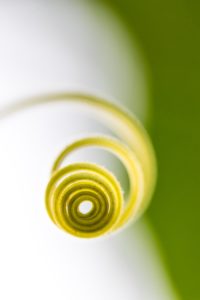What is the luteal phase?
The luteal phase is the phase after ovulation, either until your period starts or pregnancy occurs.
The lining of the uterus releases or secretes chemicals that will either help an early pregnancy attach if an egg was fertilized, or help the lining break down and shed if no egg was fertilized.
Ideally the luteal phase should be closest to 14 days for it to be considered an optimal fertile cycle. This of course isn’t the case for everyone but evidence suggests that a 14 day luteal phase is the ideal for most women.
So… what exactly is happening?
After the egg has travelled down the fallopian tube it gets to the womb. Your body starts to produce a new hormone called progesterone. This hormone will make sure your uterus keeps building up it’s lining.
But If the egg is not fertilized, levels of estrogen and progesterone drop. Your uterus does not need to maintain the nutritious lining it built up so it starts to break it down.
The thick lining and blood that was built up during the menstrual cycle will leave your body. This is your menstruation and it means that a new cycle begins.
Is the luteal phase the same as PMS?
The luteal phase is broken down into two parts, the first, you are riding high from all the feel good hormones from ovulation.
The second half of this phase is notoriously difficult for many women. You might feel PMS symptoms like cravings for carbohydrate-heavy comfort foods, bloating, headaches, anxiety and moodiness. These symptoms are not all in your head but they aren’t something you should suffer through either.
Estrogen drops throughout your premenstrual week 4 and the lower it goes, the more it has the potential to drag down your mood and make you sad, irritable or anxious.
Descending estrogen can trigger cravings for carbohydrate-rich foods, such as sweets, pasta and bread.
The reason? As the level of this hormone drops, it drags down levels of mood-moderating serotonin in the brain—and carbohydrates help replenish it, so your body pushes you to eat more of them.
Progesterone is descending during this week, however, because it’s still at relatively high levels, you’ll likely still feel the urge to eat foods high in fat and calories and have a greater appetite.
What to do during the luteal phase? Or how to help with PMS.
The luteal phase of your menstrual cycle is a great time to deepen your self care practice by taking a few extra steps to do things that you know really nourish your physical, mental and emotional body.
It is still important to continue with moderate exercise as ‘stuck energy’ can manifest as cramps and mood swings leading up to menstruation.
If you know that PMS is something you struggle with, it is important to get your entire menstrual cycle healthy, not just the luteal phase.
Connect with me here to schedule a complimentary consult call to learn how I can help you regulate your hormones for a happy and healthy cycle.
Here’s to happy and healthy cycles!

